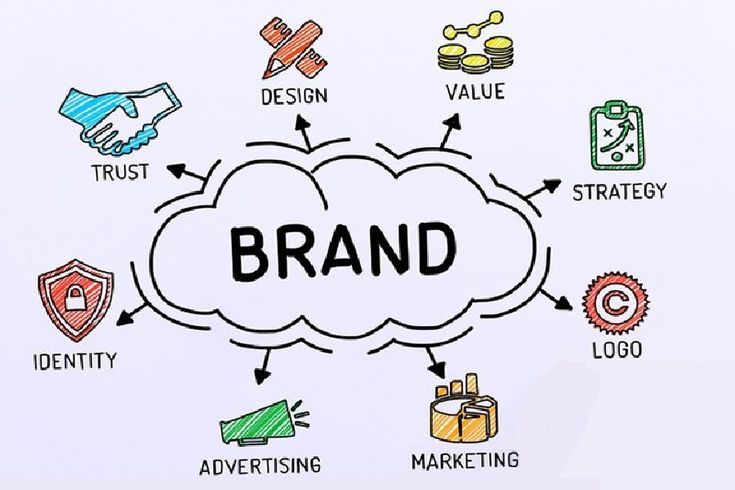
The Power of Branding: Developing Your Business Identity
“The Power of Branding: Developing Your Business Identity”
In today’s competitive market, branding is more crucial than ever. It’s not just about a logo or a catchy slogan; branding encompasses the entire identity of your business. It shapes how customers perceive you and distinguishes you from the competition. Understanding and developing your brand can lead to increased customer loyalty, recognition, and, ultimately, business success. In this article, we will delve into the power of branding and provide you with practical steps to develop a strong business identity.
Understanding Branding
What is Branding?
Branding is the process of creating a unique identity for your business, distinguishing it from competitors, and building a memorable presence in the market. It involves defining who you are, what you stand for, and how you want to be perceived by your audience, ensuring that every aspect of your business aligns with these values. This includes visual elements like logos, colors, and design aesthetics, which help create immediate recognition, as well as non-visual elements like tone of voice, customer service, and the overall experience you offer, which contribute to building trust and loyalty. A strong brand not only attracts and retains customers but also fosters a deeper connection and emotional resonance with your audience, driving long-term success and growth.
The Importance of Branding
Branding is essential because it sets you apart in the marketplace, allowing you to stand out from competitors and capture the attention of potential customers. A strong brand creates a memorable impression, making it easier for people to recall your business and fostering customer loyalty, turning one-time buyers into repeat clients. It also helps to establish credibility and trust, which are crucial for building long-term relationships with your audience. When customers recognize and trust your brand, they are more likely to choose your products or services over those of competitors, giving you a competitive edge.

Credit: powerawaken.com
Elements of a Strong Brand
Logo and Visual Identity
Your logo is often the first thing people associate with your brand, making it a critical element of your company’s identity. As a visual representation of your business, your logo should be simple, memorable, and reflective of your brand’s personality to leave a lasting impression. Beyond the logo, your visual identity encompasses colors, typography, and imagery, all of which should be consistently applied across all marketing materials to maintain a cohesive and professional appearance.
Brand Voice and Tone
How you communicate with your audience is crucial to your brand’s success. Your brand voice should reflect your brand’s personality and values, ensuring that it resonates with your target audience. Whether your tone is formal, friendly, or humorous, maintaining consistency helps build a recognizable and trustworthy brand that people can relate to and depend on.
Consistent Messaging
Consistency in messaging ensures that your brand is easily recognizable by maintaining a uniform voice and visual identity across all channels. This means delivering a cohesive message across platforms, from your website to social media to customer interactions, ensuring that every touchpoint reflects the same core values and tone. Consistent messaging not only reinforces your brand identity but also fosters trust and familiarity, helping to build a solid and lasting relationship with your audience.
Building Your Brand Strategy
Defining Your Brand Purpose
Your brand purpose is the reason your business exists beyond making a profit. It embodies the core mission and values that drive your company’s actions and inspire your team to strive for excellence. Defining your brand purpose creates a deeper emotional connection with your audience, fostering loyalty and trust. Additionally, it serves as a guiding principle for making strategic business decisions, ensuring alignment with your overarching goals and vision.
Identifying Your Target Audience
Understanding who your audience is and what they care about is key to building a successful brand. Conducting thorough market research allows you to pinpoint your target demographics, including their interests, behaviors, and pain points. By gaining these insights, you can develop a branding strategy that resonates with your audience, creating a more personalized and relevant experience. Tailoring your branding efforts to align with your audience’s needs and preferences ultimately fosters stronger connections and loyalty.
Creating a Unique Value Proposition
A unique value proposition (UVP) serves as a powerful tool in distinguishing your business from competitors by highlighting the distinct advantages and benefits of your products or services. It encapsulates the specific value and advantages that appeal directly to your target audience, compelling them to prefer your offerings over others in the market. Crafting a compelling UVP involves clearly communicating how your products or services solve customer problems or fulfill needs in ways that are unmatched by competitors. Ultimately, a well-defined UVP not only attracts customers but also builds brand loyalty and enhances overall competitiveness in the marketplace.

Credit: theinspiringjournal.com
The Role of Storytelling in Branding
Crafting Your Brand Story
Every brand possesses a unique narrative that, when shared, fosters a profound emotional bond with its audience. This story should vividly depict your journey, including the obstacles overcome, milestones achieved, and the core values that define your brand. Authenticity is crucial in crafting this narrative, as it enables customers to resonate deeply with your brand’s ethos and mission. By effectively communicating your brand story, you can cultivate a loyal customer base that shares your values and feels personally connected to your journey.
Connecting Emotionally with Your Audience
Emotional connections play a pivotal role in branding strategies, acting as a potent catalyst for cultivating customer loyalty. By leveraging emotions, brands can forge deep-seated bonds with their audience, fostering a sense of trust and resonance. Techniques such as storytelling enable brands to craft narratives that resonate on a personal level, while strategic use of imagery enhances emotional engagement. Furthermore, by prioritizing authentic customer experiences, brands can solidify these connections, turning casual consumers into devoted advocates.
Brand Positioning
Differentiating from Competitors
Brand positioning involves strategically placing your brand in the consumer’s mind to emphasize its distinct qualities and advantages over competitors. This process begins with a thorough analysis of competitors to pinpoint opportunities where your brand can differentiate itself effectively. Your positioning statement should clearly articulate what sets your brand apart, be relevant to your target audience’s needs and desires, and highlight how choosing your brand provides advantages over alternatives in the market. Effective brand positioning not only distinguishes your brand but also creates a compelling reason for consumers to prefer and engage with it.
Positioning Statement
A positioning statement serves as a foundational declaration that articulates the distinct value your brand brings to its intended audience. It encapsulates your brand’s identity, core offerings, and the significance of these offerings to your customers. By clearly defining who you are, what you provide, and why it is valuable, this statement aligns all branding strategies and communications around a cohesive message. Ultimately, it acts as a strategic compass, ensuring consistent and effective engagement with your target market.
Implementing Your Brand Across Channels
Digital Presence: Website and Social Media
Your online presence plays a crucial role in shaping your brand’s image and connecting with your audience. It’s essential to maintain consistency across your website and social media platforms by aligning visual design, tone of voice, and messaging with your brand identity. Regular interaction with your audience helps build relationships and fosters loyalty. Delivering valuable content that resonates with your brand values not only engages your audience but also reinforces your brand’s credibility and authority in your industry.
Offline Branding: Packaging and Signage
Offline branding encompasses physical elements such as packaging, business cards, and signage, all of which play a crucial role in representing your brand identity. These elements must reflect your brconsistently and’s values and aesthetics consistently, ified and memorable experience for customers. Investing in high-quality packaging and well-designed signage not only enhances brand recognition but also reinforces your brand’s professionalism and reliability. These physical touchpoints serve as tangible representations of your brand’s identity and can significantly influence customer perception and loyalty.

Credit: scientificworldinfo.com
Maintaining Brand Consistency
Brand Guidelines and Standards
Establishing brand guidelines is essential for ensuring uniformity and coherence across all facets of your organization. These guidelines encompass critical elements such as logo usage, color schemes, typography choices, and the tone of voice used in communication. By adhering to these guidelines, businesses can consistently reinforce their brand identity, thereby enhancing recognition and trust among their audience. Clear and comprehensive brand guidelines also help mitigate any potential confusion and maintain a cohesive brand image across various platforms and communications.
Training Employees on Brand Values
Training your employees thoroughly on your brand values and standards is crucial because they act as ambassadors for your brand. By equipping them with customer service training, they can provide consistent and excellent service, reflecting positively on your brand. Internal communications training ensures that they convey your brand message effectively within the organization. Regular updates on brand initiatives keep them informed and engaged, enabling them to align their actions with your brand’s evolving goals and directions.
Measuring Brand Success
Key Performance Indicators (KPIs)
To effectively evaluate the impact of your branding strategies, it’s crucial to establish and monitor key performance indicators (KPIs). These metrics typically encompass aspects such as brand awareness levels among your target audience, the strength of customer loyalty towards your brand, and the depth of engagement your brand generates across various platforms. By consistently assessing these KPIs, you gain insights into the effectiveness of your branding efforts, allowing you to pinpoint successful strategies and areas that require enhancement. This iterative process enables you to refine your approach, ensuring that your branding initiatives align closely with your overarching business goals.
Customer Feedback and Surveys
Customer feedback serves as a critical metric in assessing the effectiveness of your brand. By actively conducting surveys and collecting feedback, you gain insights into how your audience views your brand, its products, and services. These insights are pivotal in making informed strategic decisions to enhance customer satisfaction and loyalty. Ultimately, leveraging customer feedback allows you to continuously refine and optimize your branding strategy to better align with the expectations and preferences of your target market.

Credit: clearadsagency.com
FAQs About Branding
What is the purpose of branding?
Branding creates a unique identity for your business, sets you apart from competitors, and builds customer loyalty.
How can I create a strong brand identity?
Focus on consistency in visual elements, tone of voice, and messaging. Define your brand purpose and understand your target audience.
Why is storytelling important in branding?
Storytelling creates an emotional connection with your audience, making your brand more relatable and memorable.
What are brand guidelines?
Brand guidelines are a set of standards for using brand elements consistently, ensuring a unified brand identity.
How do I measure the success of my branding efforts?
Track KPIs like brand awareness and customer loyalty, and gather customer feedback through surveys.
What can I learn from successful brands?
Analyze their strategies for visual identity, customer engagement, and overall branding efforts to gain insights for your brand.
Conclusion
Developing a solid brand identity is a powerful tool for business success. It requires a strategic approach, consistency, and a deep understanding of your audience. By focusing on elements like visual identity, brand voice, and storytelling, you can create a brand that resonates with your customers and stands the test of time. Remember, your brand is more than just a logo; it’s the heart and soul of your business. Embrace the power of branding and watch your business thrive.






